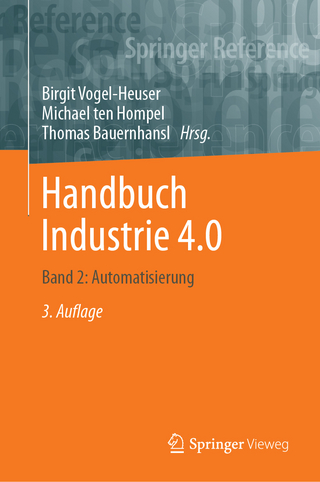
Materials and Contact Characterisation VIII
WIT Press (Verlag)
978-1-78466-197-7 (ISBN)
Demand for high quality production from both industry and consumers has led to rapid developments in materials science and engineering. Current research is focussed on modification technologies that can increase the surface durability of materials. The characteristics of the system reveal which surface engineering methods should be chosen and as a consequence it is essential to study the combination of surface treatment and contact mechanics.
The accurate characterisation of the physical and chemical properties of materials requires the application of both experimental techniques and computer simulation methods in order to gain a correct analysis. A very wide range of materials, starting with metals through polymers and semiconductors to composites, necessitates a whole spectrum of characteristic experimental techniques and research methods.
The papers in this book examine various combinations of techniques and refer to such topics as: Experimental and Measurement Techniques; Computer Methods and Simulation; Mechanical Characterisation and Testing; Surface Modification and Treatments; Nano, Micro and Macro Characterisation; Advances in Composites; Biomaterials.
Contents
Section 1: Experimental and measurement techniques
Experimental determination and theoretical analysis of local residual stress at grain scale; The dependence of reverse recovery time on barrier capacitance and series-on resistance in Schottky diodes; The growth of a passive film on steel studied with in-situ AFM; Evaluation of wood surface modification using hot melting plastic droplets for contact angle measurements; Characterisation of waste polyolefin blends using thermal and imaging techniques aimed at product development; Non-destructive eddy current measurements for silicon carbide heterostructure analysis; A new cooling technique for targets operating under very intense beams
Section 2: Computer methods and simulation
Numerical evaluation of barely visible impact damage in a carbon fibre-reinforced composite panel with shear loading; Automated defect size determination for gear tooth root bending strength simulation;A mathematical model for abrasive erosion wear in composite Fe-based matrix with WC-Co reinforcement; Development of an analytical solution mathematical model for a thermoplastic starch and linear low-density polyethylene blends for pyrolytic degradation; Evaluation of squeeze effect in a gas thrust bearing; Modal flexibility-based damage detection of truss bridges: a conceptual framework; Development of software for the creation of new materials with hybrid properties
Section 3: Mechanical characterisation and testing
Mossbauer studies of iron-based superconductors; Determination of contact pressure at pneumatic seal/rod interface from radial force measurement
Section 4: Surface modification and treatments
Study of the interface and durability of the adhesion between photovoltaic cells and concrete-based facade panels; The splat formation issue in thermal spray processes;
Dynamics of tempering processes in stainless steel; Surface characterization of lignin materials by means of inverse gas chromatography; Effect of fine particle peening using hydroxyapatite shot particles and plasma sprayed hydroxyapatite coating on fatigue properties of beta titanium alloy
Section 5: Nano, micro and macro characterisation
Microstructure transformation of alpha-titanium after mechanical and laser forming; The unique case of tin(II) fluoride containing unexpected substitutional solid solutions: local structure versus global structure; Nanoscale and microscale simulations of N-N junction heterostructures of 3c-4h silicon carbide
Section 6: Advances in composites
(special session organised by K. Tanaka & K. Takemura)
Structural modification of cellulose nanocomposites by stretching; Dispersion evaluation of carbon nanotube and mechanical properties for carbon nanotube/polyamide 6; Fabrication of magnetite/PLA composite nanofiber sheet and evaluation of its mechanical properties; Effect of the CNT growth temperature on the tensile strength of carbon fiber; Creep rupture of water-absorbed green composite; Influence of laser surface treatment on the tensile shear strength of resistance welded CFRTP; Interfacial shear strength of resin particles added to carbon fiber/maleic anhydride grafted polypropylene in a hot-wet environment; Effects of carbon nanotube deposition time to carbon fiber on tensile lap-shear strength of resistance welded CFRTP; Effects of press pressure on the mechanical properties of rib root for glass fiber reinforced polypropylene composites, molded by press and injection hybrid molding; Effects of the molecular weight of polycarbonate on the mechanical properties of carbon fiber reinforced polycarbonate; FEM analysis of temperature distribution of a flat plate mold with hollows, heated by direct resistance heating; Internal damage evaluation of CFRTP cut by a circular saw
Section 7: Biomaterials
Surface degradation of nanocrystalline Zirconia dental implants; A constitutive framework for human dermis mechanical modelling; Investigation of surface functionalization and coatings for biomedical applications by Zeta potential and adsorption measurements on solid surfaces; Equi-biaxial tests for mechanical characterization of Human Acellular Dermal Matrices through a custom-made biaxial fixture
Author index
| Erscheinungsdatum | 23.09.2017 |
|---|---|
| Reihe/Serie | WIT Transactions on Engineering Sciences ; 116 |
| Verlagsort | Southampton |
| Sprache | englisch |
| Maße | 178 x 254 mm |
| Themenwelt | Informatik ► Weitere Themen ► CAD-Programme |
| Technik ► Maschinenbau | |
| ISBN-10 | 1-78466-197-X / 178466197X |
| ISBN-13 | 978-1-78466-197-7 / 9781784661977 |
| Zustand | Neuware |
| Informationen gemäß Produktsicherheitsverordnung (GPSR) | |
| Haben Sie eine Frage zum Produkt? |
aus dem Bereich


